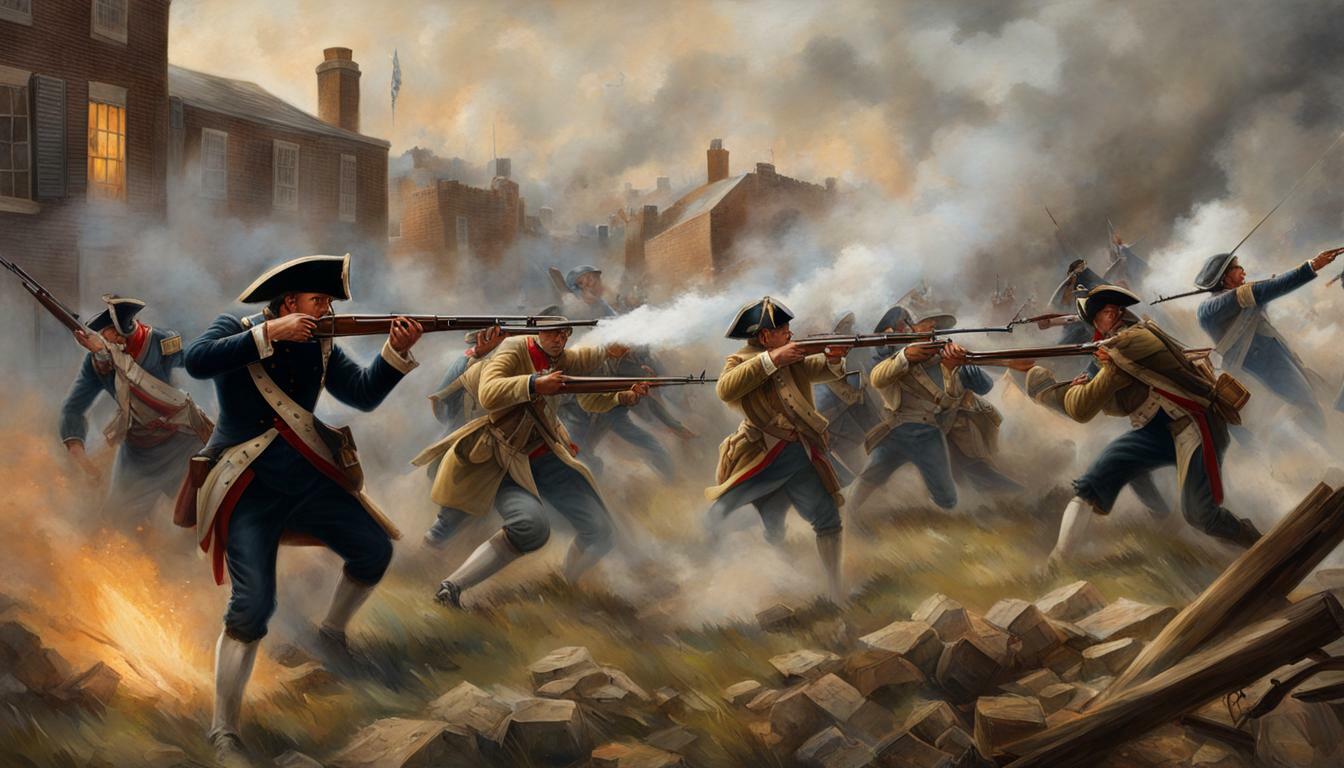The Battle of Bunker Hill, fought on June 17, 1775, was a pivotal event during the American Revolution. Taking place during the Siege of Boston in the American Revolutionary War, this battle holds significant historical importance in shaping the course of the war and the fight for American independence.
- The Battle of Bunker Hill was fought on June 17, 1775, during the Siege of Boston in the American Revolutionary War.
- Although commonly known as the Battle of Bunker Hill, the actual location of the battle was Breed’s Hill.
- The British achieved a tactical victory, but suffered heavy casualties, demonstrating that inexperienced militia could stand up to regular army troops.
- The battle influenced the British to adopt more cautious planning and maneuver execution in future engagements.
- The Battle of Bunker Hill played a significant role in the beginnings of the American Revolution and is often misunderstood or misrepresented in popular memory.
The Siege of Boston and the Battle of Breed’s Hill
The Battle of Bunker Hill, although commonly referred to by that name, actually took place on Breed’s Hill, as part of the larger Siege of Boston. This pivotal event occurred on June 17, 1775, during the American Revolutionary War. The American militia, led by Colonel William Prescott, faced off against the British army in an intense confrontation.
Amid the ongoing Siege of Boston, the American forces decided to fortify the hills surrounding the city and set their sights on Breed’s Hill, a strategic location overlooking Boston. Although the British forces launched a series of attacks, the Americans valiantly defended their position, inflicting significant casualties on the enemy.
This battle showcased the resilience and determination of the American militia, proving that inexperienced troops could hold their ground against a professional army. The British, despite securing a tactical victory by forcing the Americans to retreat, suffered heavy losses and realized the formidable challenge they faced in the fight for American independence.
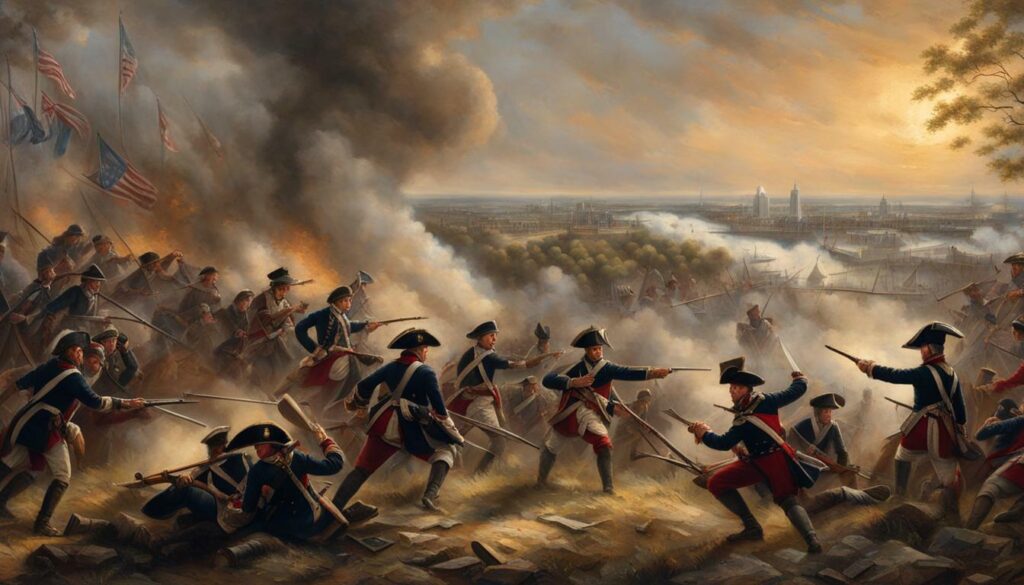
The Battle of Breed’s Hill had a profound impact on British strategy, influencing their planning and execution in future engagements. The British commanders recognized the need for more cautious approaches and refined maneuver tactics, having experienced the tenacity and resourcefulness of their American counterparts.
Unfortunately, the Battle of Bunker Hill is often misunderstood or misrepresented in popular memory. While it is commonly assumed that the battle took place on Bunker Hill, it was, in fact, fought on Breed’s Hill. This misconception underscores the importance of accurate historical understanding and the need to rectify commonly held misconceptions.
| Key Points: |
|---|
| The Battle of Bunker Hill occurred on Breed’s Hill during the Siege of Boston. |
| American militia, led by Colonel William Prescott, held their ground against the British army. |
| The battle resulted in heavy British casualties and influenced their future strategy. |
Key Players in the Battle
Colonel William Prescott played a crucial role in leading the American militia during the Battle of Bunker Hill. Born in Groton, Massachusetts, Prescott was an experienced soldier and well-respected leader among his men. He was chosen to command the militia forces stationed on Breed’s Hill, where the battle actually took place, despite its misleading name.
In the early hours of June 17, 1775, Colonel Prescott and his men worked tirelessly to construct fortifications on the hill, fortifications that would later prove vital in their defense against the British assault. Prescott’s leadership and strategic decision-making were instrumental in positioning his troops effectively, maximizing their defensive capabilities.
Under Prescott’s command, the American militiamen fought valiantly throughout the battle, repelling multiple British charges and inflicting heavy casualties on the enemy. Prescott’s unwavering determination and calm presence in the face of adversity inspired his troops, instilling in them the belief that they could hold their ground against the powerful British army.
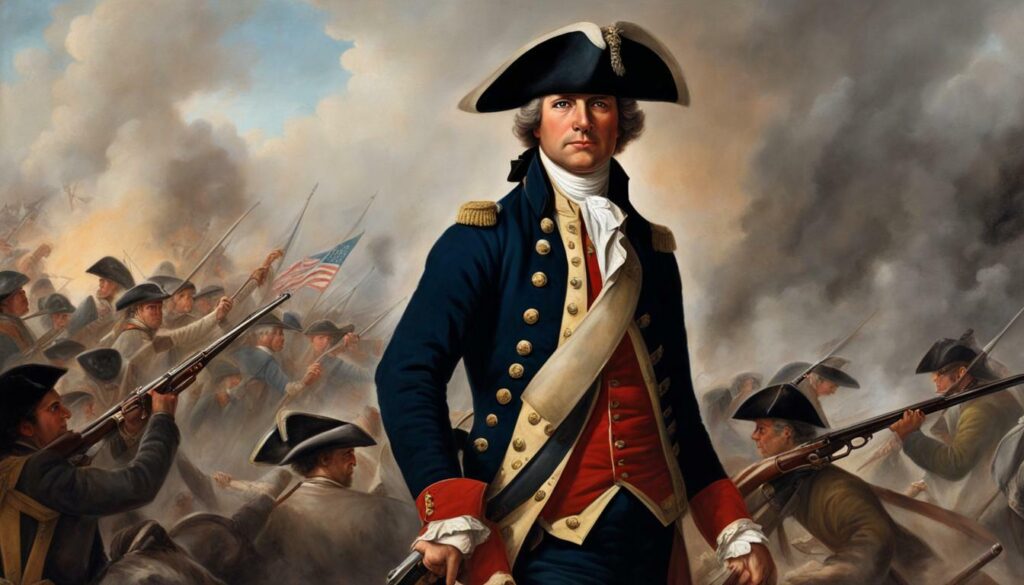
Despite ultimately being forced to retreat due to dwindling ammunition, Prescott’s leadership and the bravery of his men during the Battle of Bunker Hill had a lasting impact on the American Revolutionary War. Their resistance demonstrated that inexperienced militia could stand up to professional army soldiers, boosting the morale of the American forces and inspiring others to join the fight against British rule.
Prescott’s role in the Battle of Bunker Hill and the subsequent impact on the American Revolution cannot be overstated. His leadership and the sacrifices made by the American militia on that fateful day played a pivotal role in shaping the course of the war and ultimately leading to the birth of a new nation.
The Leadership of William Prescott
Colonel William Prescott’s unwavering leadership and tactical skills were crucial in the American militia’s defense during the Battle of Bunker Hill. His strategic decision-making and the bravery of his troops left a lasting impact on the Revolutionary War. Despite the tactical victory by the British, the battle served as a turning point, proving that the American colonists were a formidable force against the powerful British army. Prescott’s leadership and the sacrifices made on Breed’s Hill set the stage for the American Revolution, igniting the spirit of independence in the hearts of the colonists.
The Battle Strategy and Famous Quote

The Battle of Bunker Hill is often remembered for the famous order given by the American commanders: “Don’t fire until you see the whites of their eyes.” This iconic quote encapsulates the unique battle strategy employed by the American militia during the engagement.
Facing a formidable British force, the American commanders understood the importance of conserving their limited ammunition. To maximize their effectiveness, they instructed their troops to withhold their fire until the enemy was at close range, ensuring each shot would find its mark. This strategy of holding fire until the last possible moment not only conserved ammunition but also disrupted the relentless advance of the British troops.
The Battle of Bunker Hill showcased the determination and resourcefulness of the American militia forces. Despite being outnumbered and lacking professional training, they demonstrated remarkable resilience in the face of the British regular army. By standing their ground and inflicting heavy casualties on the enemy, the militia proved that they could confront and challenge the might of the British military.
| American Advantages | British Advantages |
|---|---|
|
|
The Battle of Bunker Hill serves as a testament to the valor and determination of the American colonists, who were willing to risk their lives to defend their newfound liberties. Although the battle ended in a tactical victory for the British, it marked a turning point in the American Revolution. The American forces proved that they could hold their own against the powerful British military, inspiring confidence and fueling the fight for independence.
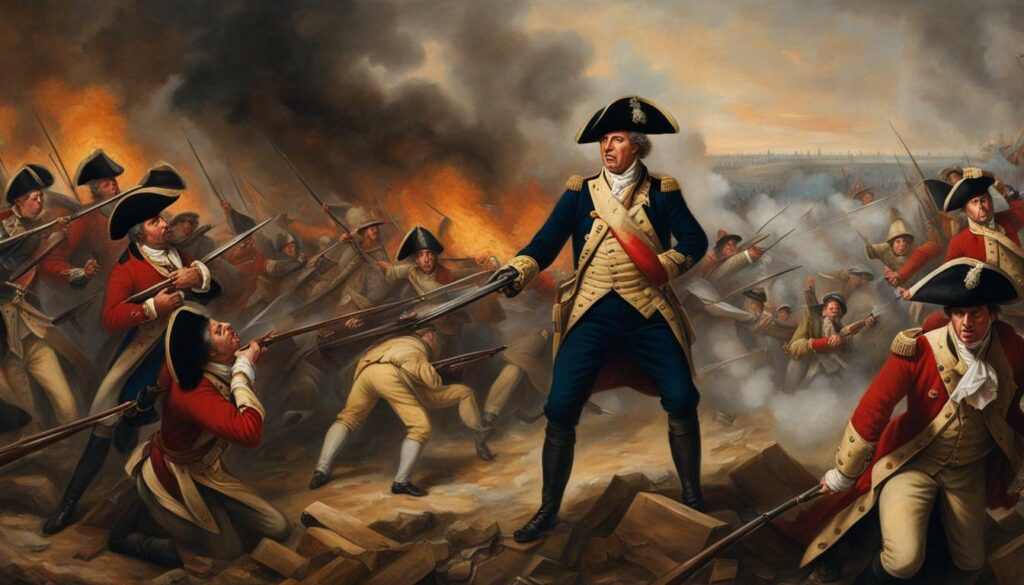
The Battle of Bunker Hill remains a revered event in American history, its significance extending far beyond its immediate outcome. While often misunderstood or misrepresented in popular memory, the battle symbolizes the spirit of resistance and the birth of a nation. It serves as a reminder of the sacrifices made by those who fought for the ideals of freedom and democracy. By understanding the true context and impact of the Battle of Bunker Hill, we gain a deeper appreciation for the courage and resilience of those who shaped the course of American history.
| Misconceptions | Realities |
|---|---|
|
|
The British Tactical Victory
The Battle of Bunker Hill resulted in a tactical victory for the British, despite their significant losses. Fought on June 17, 1775, as part of the Siege of Boston in the American Revolutionary War, the battle took place on Breed’s Hill, not Bunker Hill as commonly believed. The British forces, led by General Sir William Howe, launched a series of attacks against the fortified American positions. Although the Americans ultimately retreated, the battle showcased the resilience and determination of the inexperienced militia.
Despite suffering heavy casualties, the British emerged as the victors due to their ability to dislodge the American forces from their positions. The battle demonstrated the strength of the British army and their superior training and tactics. However, the losses they sustained were significant, with over a thousand casualties compared to the fewer than 500 casualties on the American side.

The Battle of Bunker Hill had a lasting impact on the British. It highlighted the need for more cautious planning and maneuver execution in future engagements. The British recognized that underestimating the American militia could lead to costly battles. As a result, they adjusted their approach, seeking to neutralize the advantage held by the colonial forces through careful strategy and positioning.
| Key Points: | Impact: |
|---|---|
| The Battle of Bunker Hill was fought during the Siege of Boston in the American Revolutionary War. | The battle demonstrated that inexperienced militia could stand up to regular army troops, boosting the morale of the American forces. |
| The British emerged as the victors, despite heavy casualties. | The battle led the British to adopt more cautious planning and maneuver execution in future engagements, recognizing the resilience of the American militia. |
| The Battle of Bunker Hill is often misunderstood or misrepresented in popular memory. | It is important to have a more accurate understanding of the battle and its significance in the American Revolution. |
The Battle of Bunker Hill holds a significant place in the beginnings of the American Revolution. While a tactical victory for the British, it showcased the determination and resilience of the American militia against a professional army. The battle paved the way for future engagements and led to a reassessment of British strategy and tactics. Despite being misunderstood or misrepresented in popular memory, the Battle of Bunker Hill remains a pivotal event in American history.
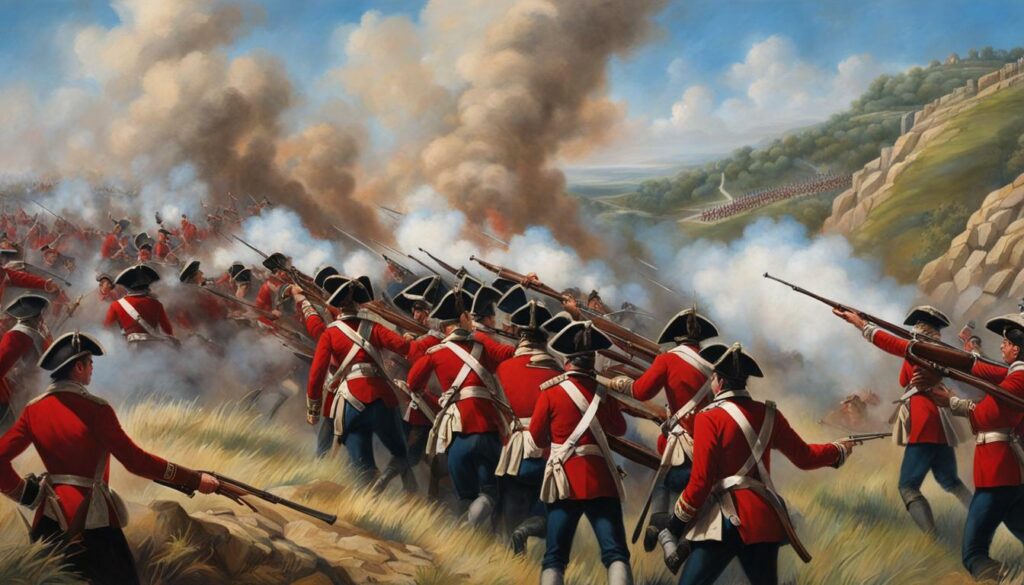
The battle served as a wake-up call for the British, prompting them to adopt a more careful and strategic approach to their planning and execution. The American militia’s resilience and determination on the battlefield surprised the British, who had previously underestimated the abilities of the colonial forces. The heavy casualties suffered by the British during the Battle of Bunker Hill forced them to reevaluate their tactics and rethink their approach to future engagements.
The British recognized the need for better planning, taking into account the capabilities and determination of the American militia. They realized that underestimating their opponents would lead to costly losses. As a result, the British became more cautious and meticulous in their military strategies, focusing on minimizing casualties and maximizing their chances of success.
This newfound caution was evident in subsequent battles of the American Revolution. The British adapted their tactics, placing a greater emphasis on reconnaissance, intelligence gathering, and carefully planned maneuvers. They understood the importance of understanding the terrain and the capabilities of their enemy before engaging in battle.
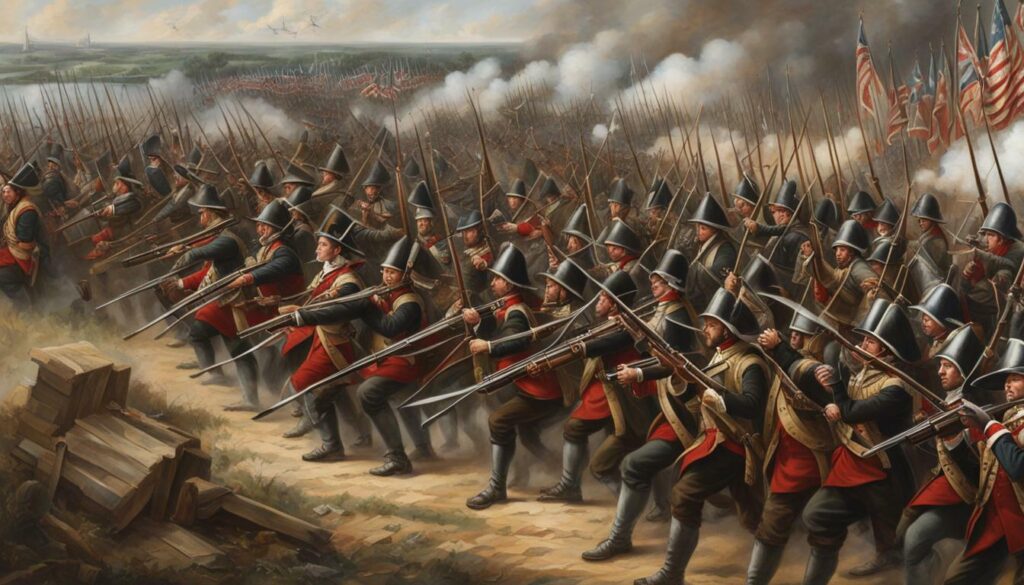
| Key Changes in British Planning and Execution |
|---|
| Increased focus on reconnaissance and intelligence gathering |
| Meticulous planning of maneuvers |
| Improved understanding of enemy capabilities |
| Adoption of defensive strategies to minimize casualties |
“The Battle of Bunker Hill taught us an invaluable lesson – never underestimate the determination and resourcefulness of our opponents. Going forward, we must carefully plan our maneuvers, gather intelligence, and adapt our strategies to the unique challenges we face. This battle has shown us that victory is not guaranteed, and every engagement demands careful consideration.”
The Battle’s Significance in the American Revolution
The Battle of Bunker Hill marked a turning point in the American Revolution, demonstrating that inexperienced militia could stand up to regular army troops. Fought on June 17, 1775, during the Siege of Boston, the battle took place on Breed’s Hill, not Bunker Hill as commonly believed. Although the British secured a tactical victory, their heavy casualties revealed the resilience of the American colonists.
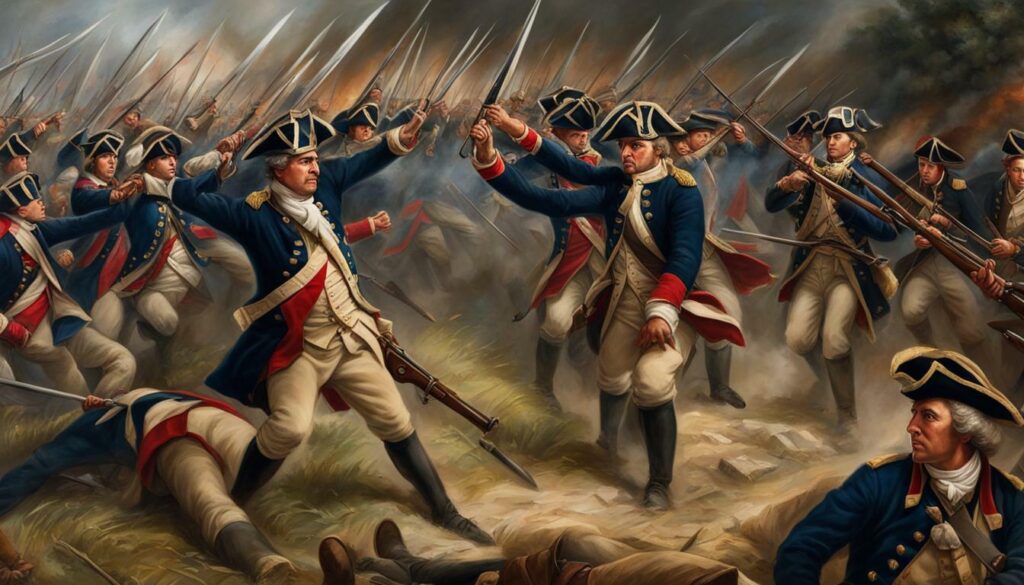
The Battle of Bunker Hill had a profound impact on both sides of the conflict. It shattered the perception of invincibility surrounding the British army and led to a reassessment of their approach to future engagements. The battle highlighted the effectiveness of guerrilla tactics and the commitment of the American militia to defend their cause.
Battle Statistics
| Combatants | British Army | American Militia |
|---|---|---|
| Casualties | 1,054 | 449 |
| Estimated Troop Strength | 2,200 | 1,500 |
The Battle of Bunker Hill served as a rallying cry for the American colonists and inspired a newfound determination to fight for their independence. It also exposed the vulnerabilities of the British army and influenced their future strategy, ultimately contributing to their eventual defeat in the American Revolutionary War.
Despite being misunderstood or misrepresented in popular memory, the Battle of Bunker Hill remains a pivotal event in American history. It embodies the spirit of defiance and resilience that propelled the American Revolution forward, forever shaping the nation’s path towards independence.
Misconceptions and Popular Memory
The Battle of Bunker Hill is often misunderstood or misrepresented in popular memory, emphasizing the importance of revisiting the historical facts. One common misconception is the actual location of the battle. Contrary to its name, the battle was fought primarily on Breed’s Hill, not Bunker Hill. This misunderstanding has led to confusion regarding the strategic significance of the battle and its relation to the ongoing Siege of Boston.
Another misconception arises from the outcome of the battle. Although the British ultimately claimed a tactical victory, the heavy casualties they suffered demonstrated the resilience and determination of the American militia forces. This battle shattered the notion that inexperienced colonists could not stand up to a professional army, and it played a crucial role in boosting morale and confidence among the American revolutionaries.
Furthermore, the Battle of Bunker Hill influenced the British approach to future engagements. The British military, recognizing the challenges they faced in facing the American militia, adopted more cautious planning and maneuver execution. This change in tactics was a direct result of the lessons learned from the Battle of Bunker Hill, where the British experienced unexpected resistance and significant casualties.
It is important to address these misconceptions and popular memory surrounding the Battle of Bunker Hill to gain a more accurate understanding of this pivotal event in the American Revolution. By revisiting the historical facts and shedding light on the true significance of the battle, we can better appreciate the bravery and sacrifice of those involved and the lasting impact it had on the course of the Revolutionary War.
| Common Misconceptions | Accurate Facts |
|---|---|
| The battle took place on Bunker Hill | The battle primarily occurred on Breed’s Hill |
| The British easily defeated the American militia | The American militia inflicted heavy casualties on the British |
| The battle had no significant impact on future engagements | The battle led to the British adopting more cautious planning and maneuver execution |
Quotes:
“Don’t fire until you see the whites of their eyes.” – William Prescott
William Prescott, the American colonel who commanded the militia forces during the Battle of Bunker Hill, famously uttered these words as he instructed his men to conserve their ammunition and wait for the British troops to approach. This quote encapsulates the determination and resolve of the American militia in the face of overwhelming odds.
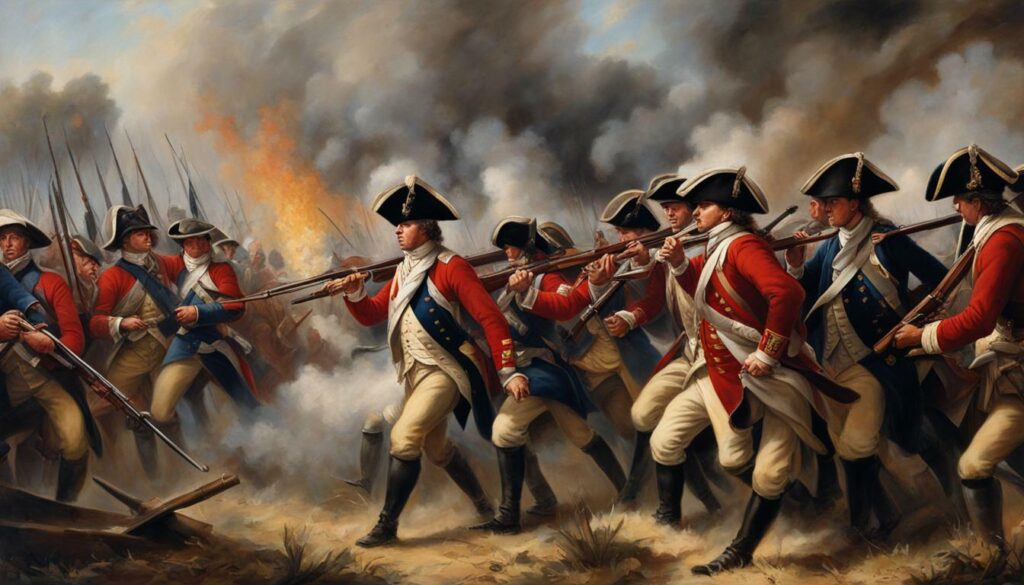
- One common misconception is the actual location of the battle.
- Another misconception arises from the outcome of the battle.
- Furthermore, the Battle of Bunker Hill influenced the British approach to future engagements.
- Contrary to its name, the battle was fought primarily on Breed’s Hill, not Bunker Hill.
- The battle shattered the notion that inexperienced colonists could not stand up to a professional army.
- It is important to address these misconceptions and popular memory surrounding the Battle of Bunker Hill.
By examining the facts and dispelling these misconceptions, we can gain a deeper understanding of the true significance of the Battle of Bunker Hill in the context of the American Revolution.
Conclusion
The Battle of Bunker Hill, fought on Breed’s Hill during the Siege of Boston, remains a pivotal moment in the American Revolution, showcasing the resilience of the American militia and impacting future British military strategies. On June 17, 1775, this historic battle took place, not on Bunker Hill as commonly believed, but on Breed’s Hill. Although the British claimed a tactical victory, they suffered heavy casualties, which demonstrated that inexperienced militia could stand up to regular army troops.
This battle had a profound impact on British planning and execution in future engagements. The British were forced to adopt more cautious strategies and maneuver execution after realizing the strength and determination of the American forces. The Battle of Bunker Hill also marked a turning point in the American Revolution, inspiring the colonists and bolstering their confidence in their fight for independence.
Unfortunately, the Battle of Bunker Hill is often misunderstood or misrepresented in popular memory. It is crucial to have a more accurate understanding of this significant event in American history. Recognizing the bravery and resilience of the American militia and the strategic implications of the battle can provide a deeper appreciation for the sacrifices made during the Revolutionary War.
The Battle of Bunker Hill, fought on Breed’s Hill during the Siege of Boston, served as a catalyst for change in the American Revolution. It demonstrated the determination of the American militia and forced the British to reevaluate their military strategies. This battle remains a testament to the courage and tenacity of the early American patriots who fought for their freedom.
FAQ
Q: What was the actual location of the Battle of Bunker Hill?
A: The Battle of Bunker Hill was actually fought on Breed’s Hill, not Bunker Hill.
Q: When did the Battle of Bunker Hill take place?
A: The battle was fought on June 17, 1775.
Q: Who were the key players in the Battle of Bunker Hill?
A: William Prescott was the American colonel who commanded the militia forces during the battle.
Q: What was the famous quote associated with the Battle of Bunker Hill?
A: The famous quote from the battle is “Don’t fire until you see the whites of their eyes.
Q: What was the outcome of the Battle of Bunker Hill?
A: The British achieved a tactical victory but suffered heavy casualties.
Q: How did the Battle of Bunker Hill impact British planning and execution?
A: The battle led to more cautious planning and maneuver execution by the British in future engagements.
Q: What is the significance of the Battle of Bunker Hill in the American Revolution?
A: The battle is a pivotal moment in the beginnings of the American Revolution, demonstrating the ability of inexperienced militia to stand up to regular army troops.
Q: What are some misconceptions and popular memory surrounding the Battle of Bunker Hill?
A: The battle is often misunderstood or misrepresented in popular memory, highlighting the need for a more accurate understanding of the event.

